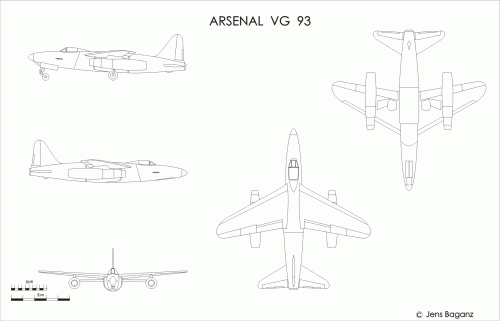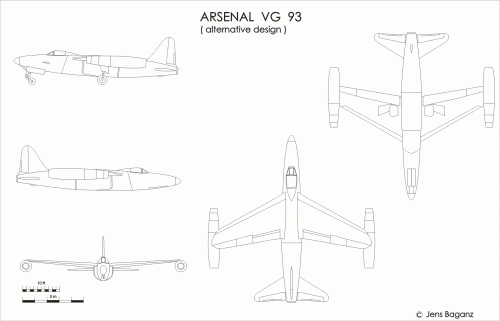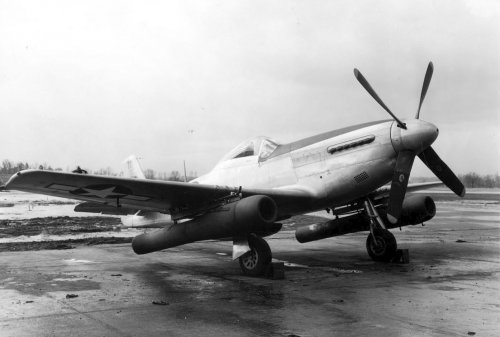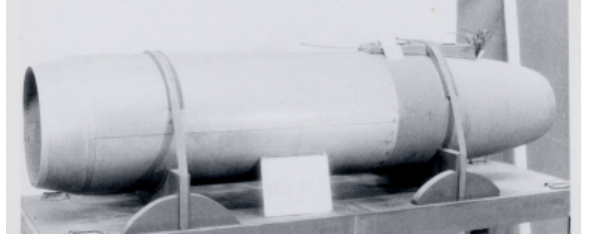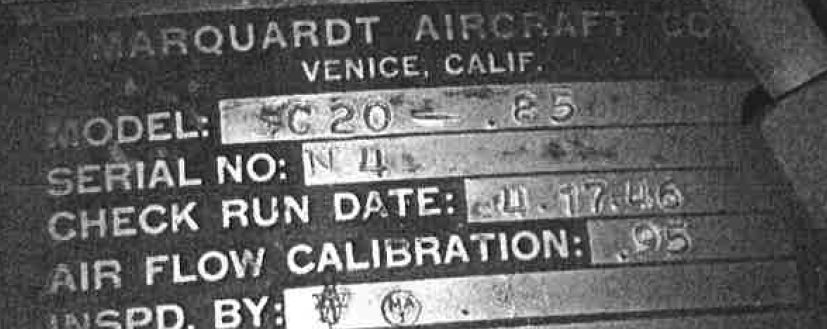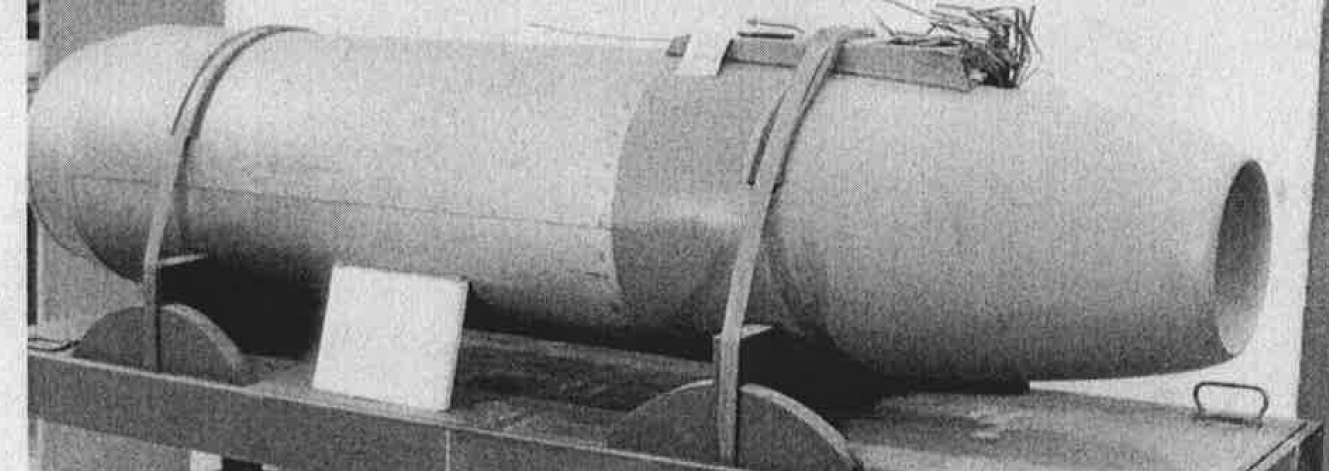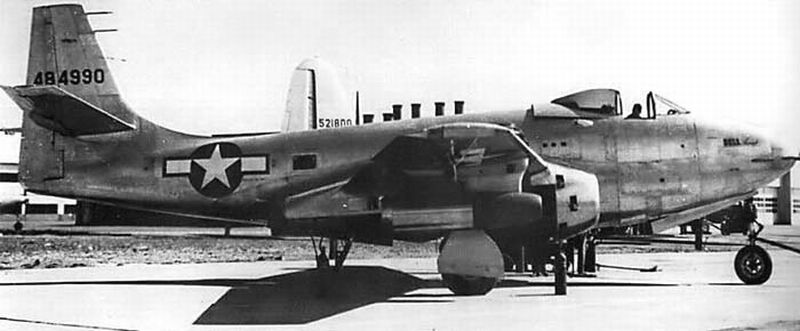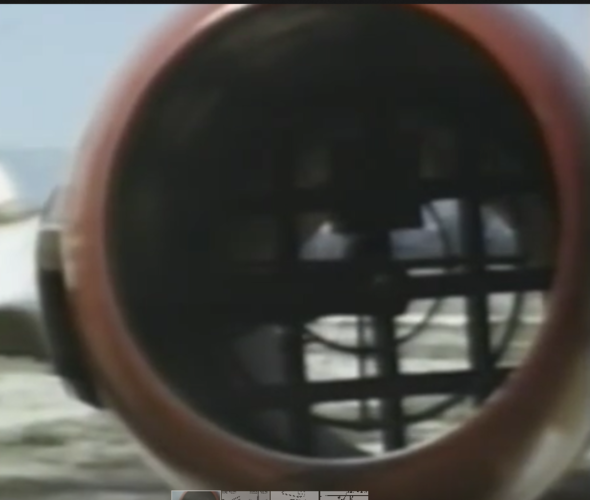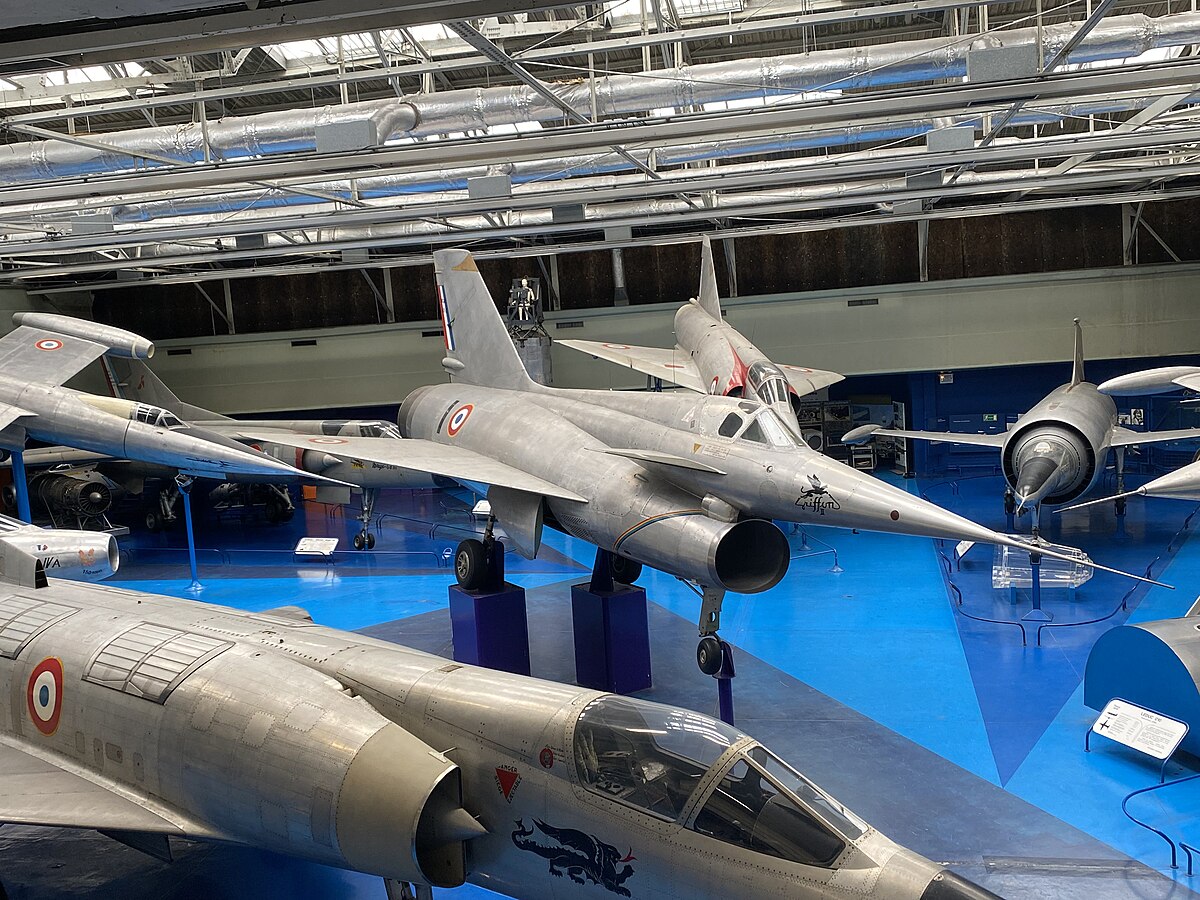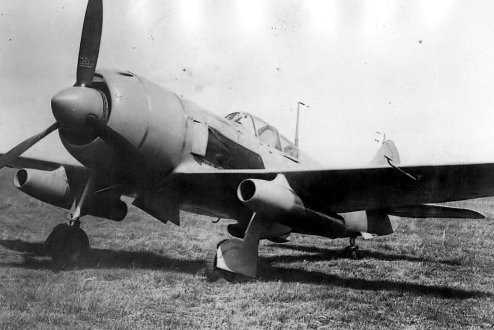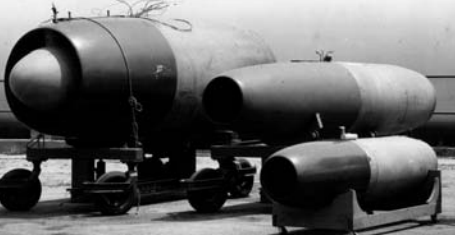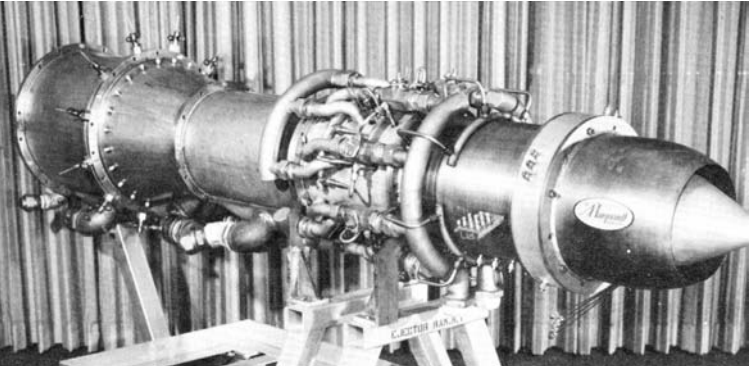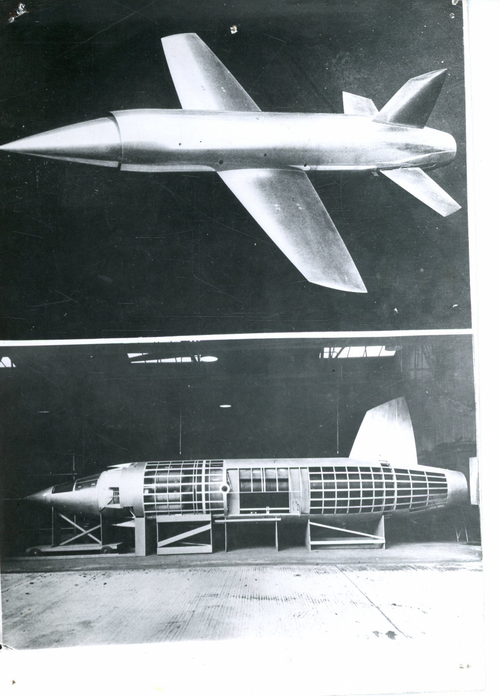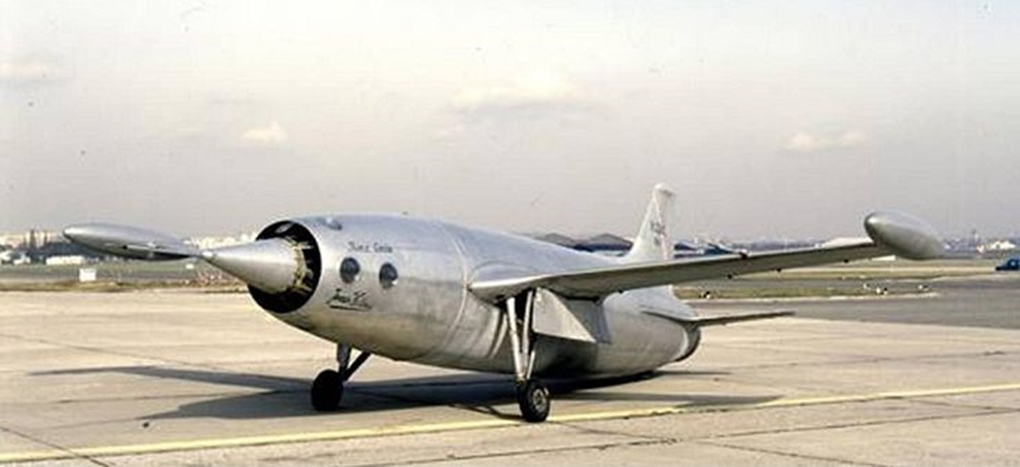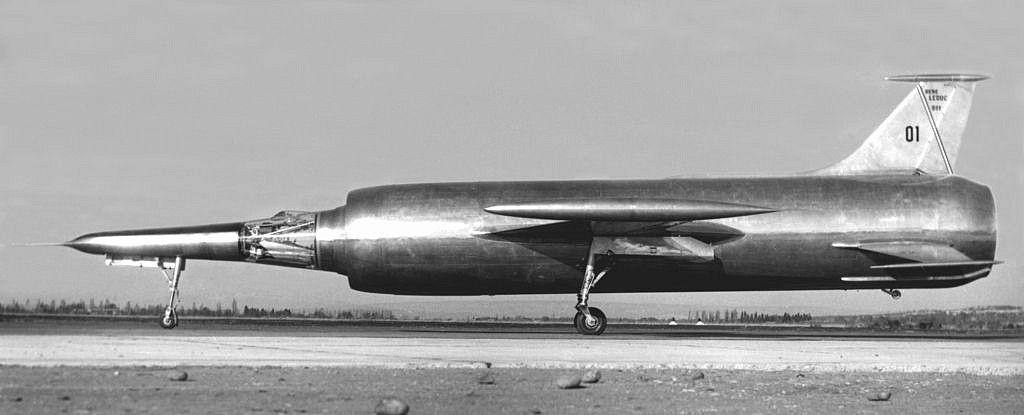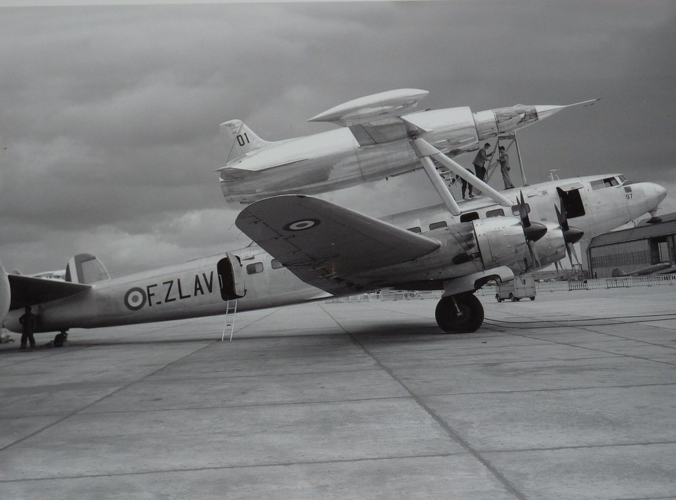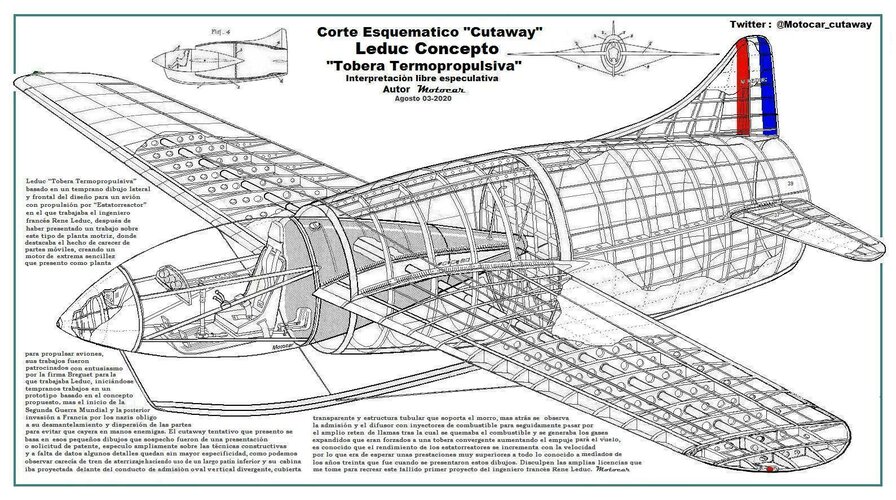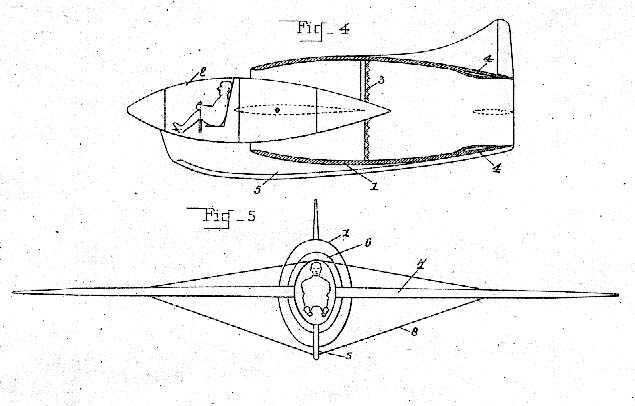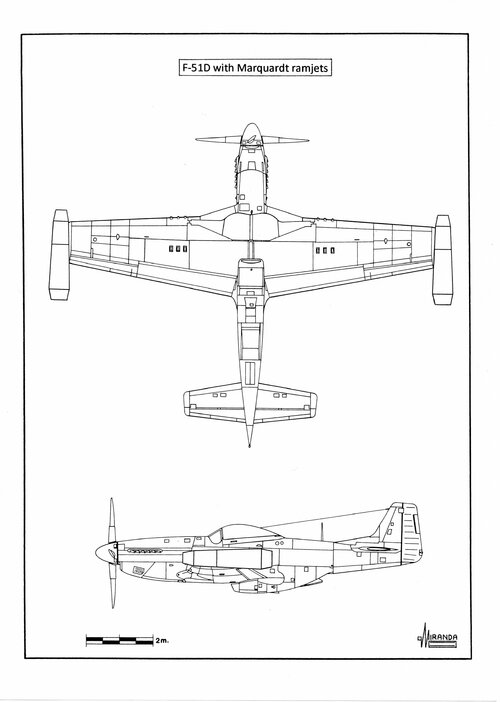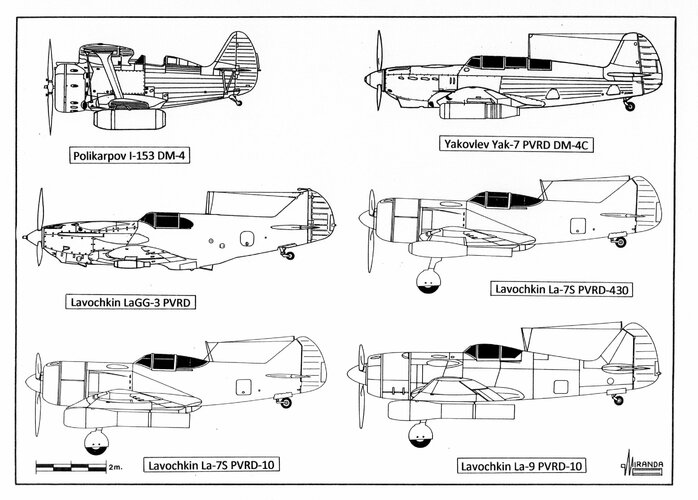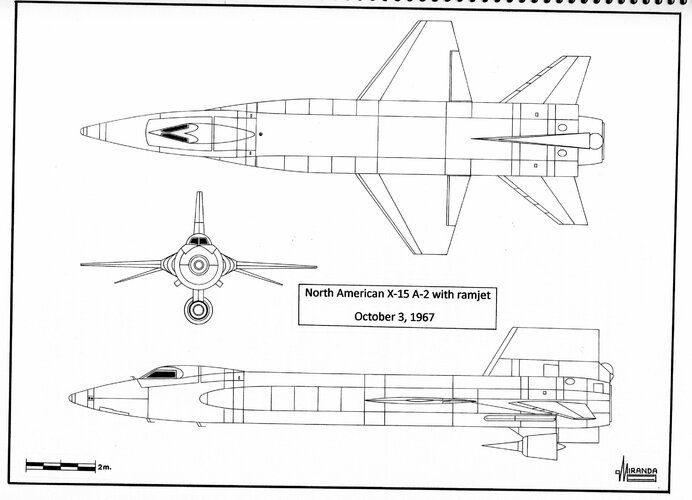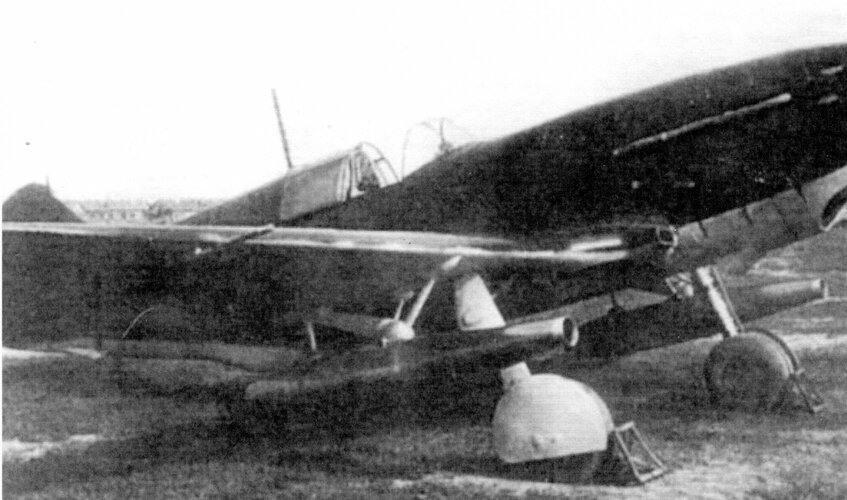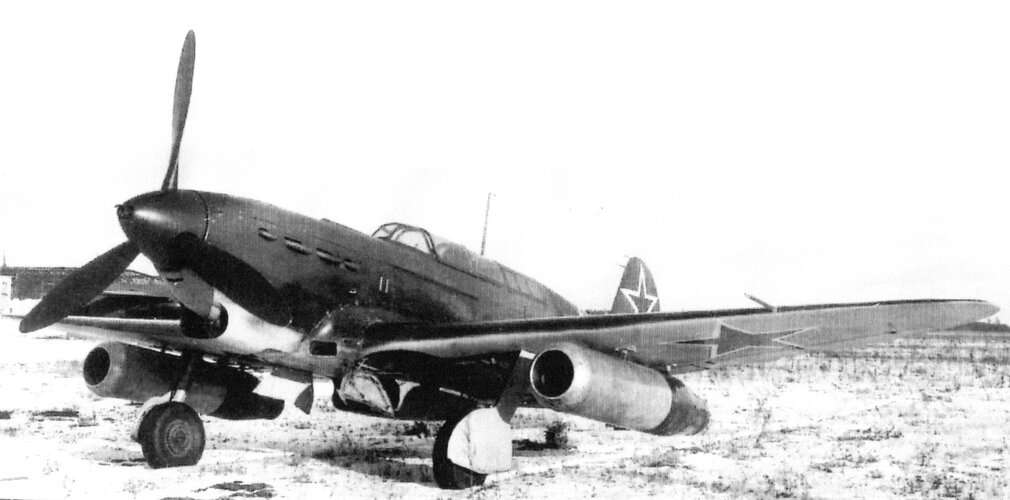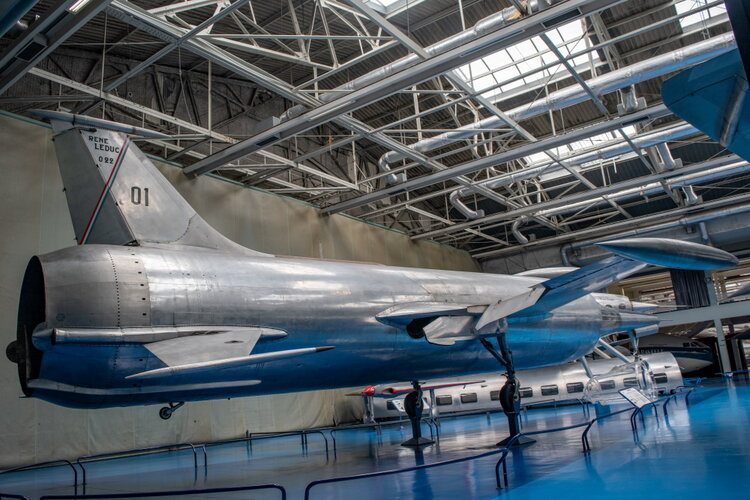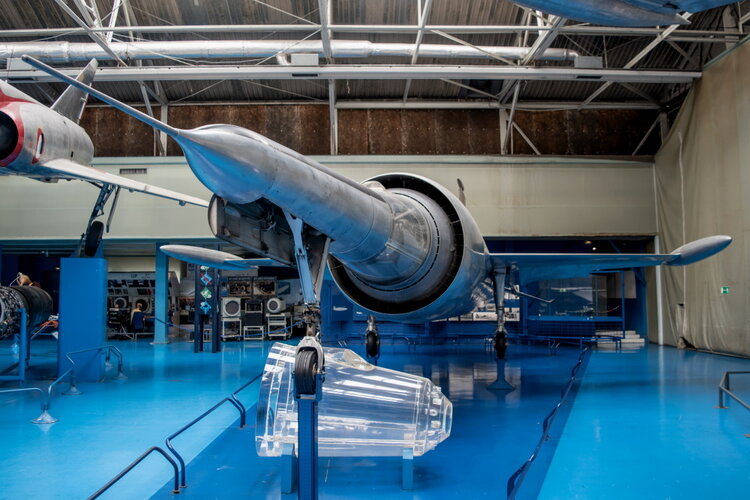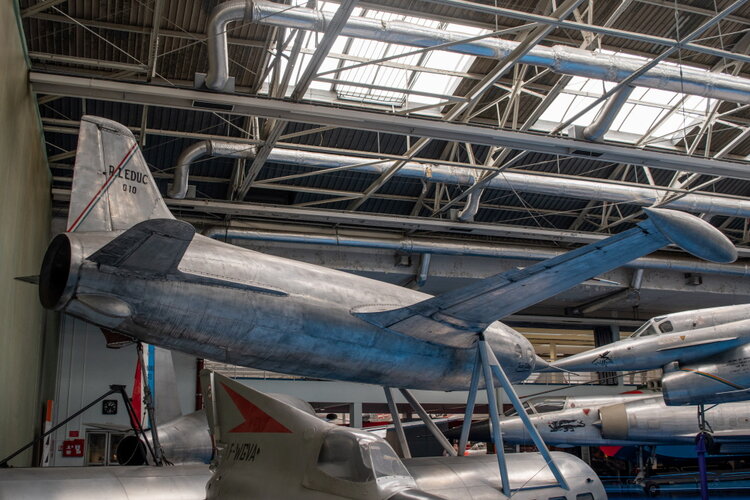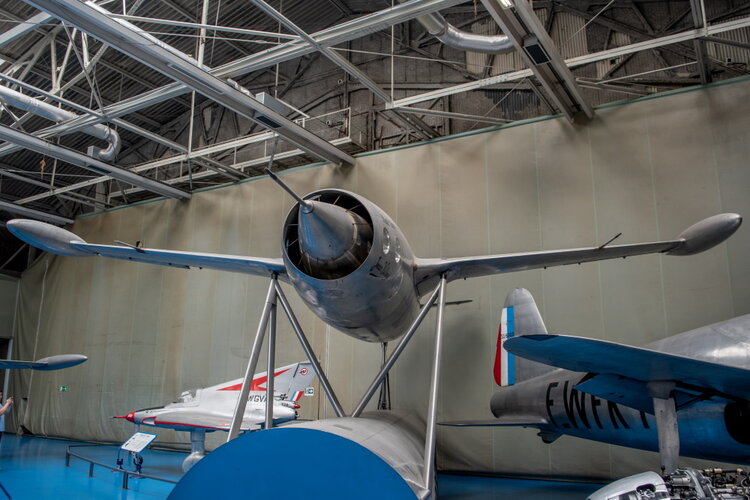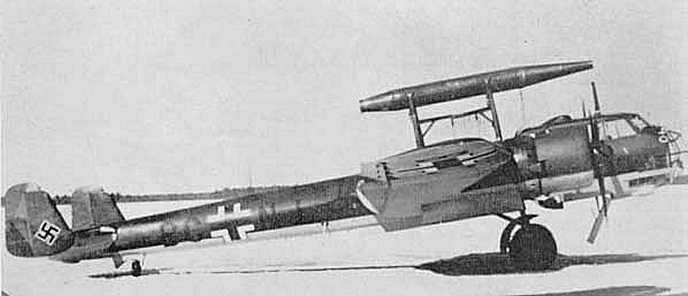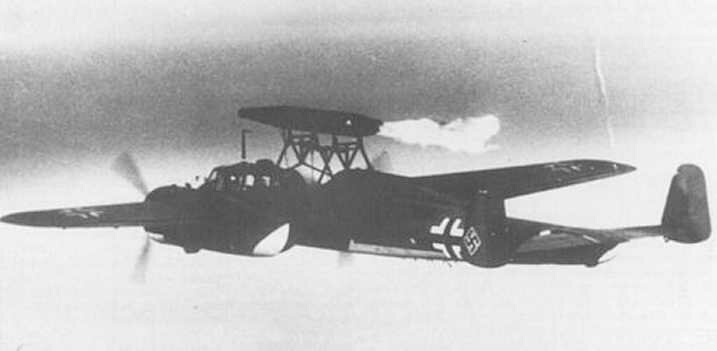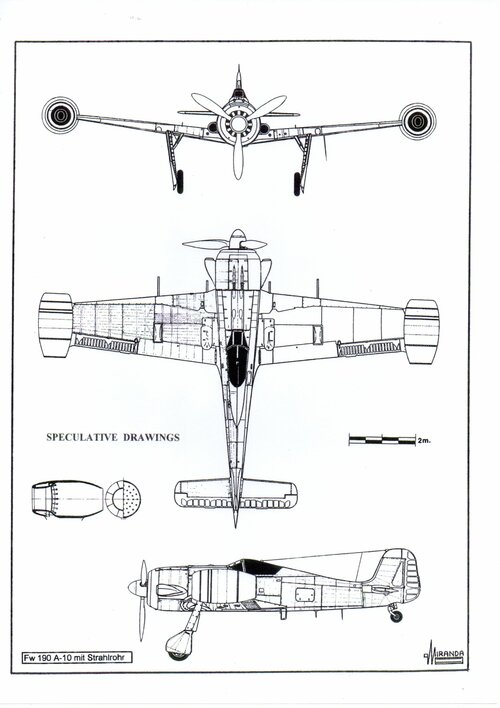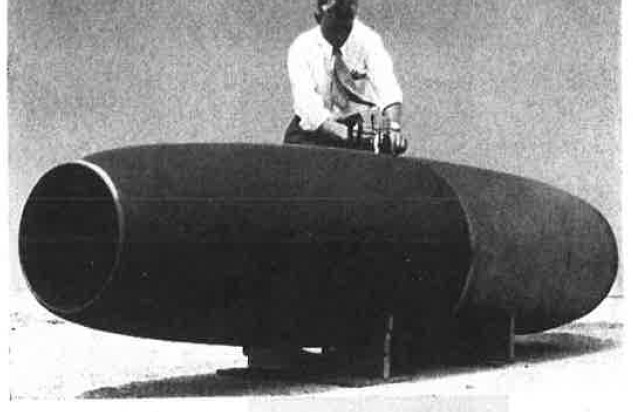Here's some commentary on ramjets on planes circa 1945 - 1950
P-51D-25-NA, serial 44-63528, was fitted with two wingtip Marquart XRJ-30-MA ramjet engines. The top speed of the plane was raised 50 mph when the ramjets were running. Test flights occurred between 1946 and August 1948 when the plane was lost during a test flight. One ramjet exploded after catching fire and the pilot bailed out. That ended this experimental type.
That's the one shown above in pictures.
Two P-80A-1-LO aircraft were converted to carry ramjets. Serial 44-85042 with two wingtip Marquardt RJ-20-85D and serial 44-85214 fitted with two wingtip Marquardt RJ-30-10B ramjets. These aircraft were re-designated ERF-80A-1-LO and dubbed “Trijets.”
Approximately one hundred flights were made with these aircraft between 1947 and -48 at Muroc, mostly with Herman “Fish” Salmon piloting. 44-85042 first flew on March 12th, 1947 and 44-85412 on June 17th, 1948. Flights were made with all three engines and with the ramjets alone.
Several La-7 and -9 were fitted with PVRD ramjets. Unlike the US P-51 version, the Lavochkin’s had their ramjets fitted mid-wing just outboard of the landing gear in streamlined nacelles. Design calculations called for a speed of 497 mph, but in testing the fighters had difficulty breaking 400 mph due to the increased weight and drag of the installation. The project was soon cancelled.
One Bell XP-83 44-84990 was fitted with Marquardt RJ-30 ramjets too.
View attachment 652126
Testing found the same issues as with other ramjet fitted aircraft. Fuel consumption was too high, and the ramjets added drag didn't provide enough of a speed boost over the normal variant to warrant use.

